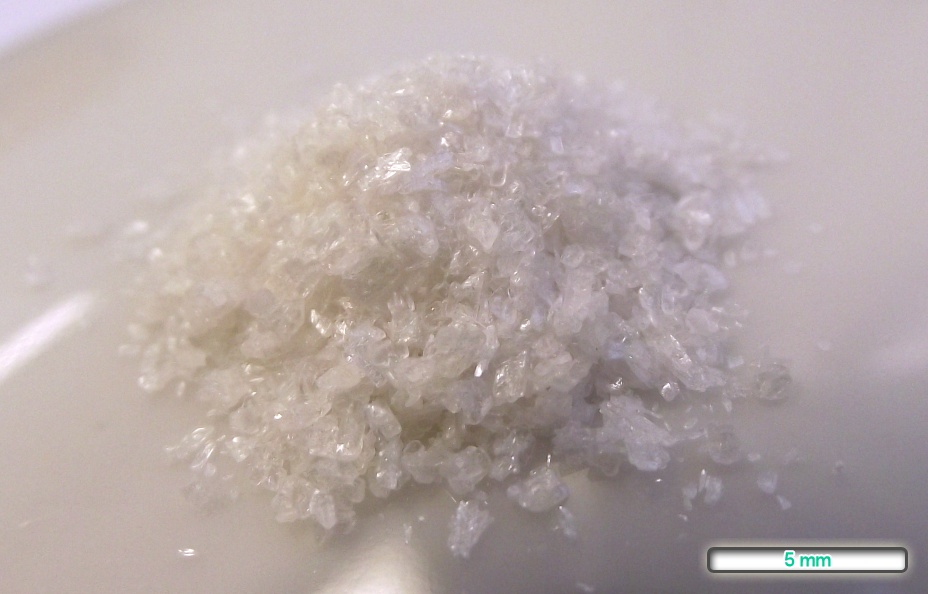|
Nitazoxanide
Nitazoxanide, sold under the brand name Alinia among others, is a broad-spectrum antiparasitic and broad-spectrum antiviral medication that is used in medicine for the treatment of various helminthic, protozoal, and viral infections. It is indicated for the treatment of infection by '' Cryptosporidium parvum'' and '' Giardia lamblia'' in immunocompetent individuals and has been repurposed for the treatment of influenza. Nitazoxanide has also been shown to have ''in vitro'' antiparasitic activity and clinical treatment efficacy for infections caused by other protozoa and helminths; evidence suggested that it possesses efficacy in treating a number of viral infections as well. Chemically, nitazoxanide is the prototype member of the thiazolides, a class of drugs which are synthetic nitrothiazolyl- salicylamide derivatives with antiparasitic and antiviral activity. Tizoxanide, an active metabolite of nitazoxanide in humans, is also an antiparasitic drug of the thiazolid ... [...More Info...] [...Related Items...] OR: [Wikipedia] [Google] [Baidu] |
Broad-spectrum Antiparasitic
Antiparasitics are a class of medications which are indicated for the treatment of parasitic diseases, such as those caused by helminths, amoeba, ectoparasites, parasitic fungi, and protozoa, among others. Antiparasitics target the parasitic agents of the infections by destroying them or inhibiting their growth; they are usually effective against a limited number of parasites within a particular class. Antiparasitics are one of the antimicrobial drugs which include antibiotics that target bacteria, and antifungals that target fungi. They may be administered orally, intravenously or topically. Overuse or misuse of antiparasitics can lead to the development of antimicrobial resistance. Broad-spectrum antiparasitics, analogous to broad-spectrum antibiotics for bacteria, are antiparasitic drugs with efficacy in treating a wide range of parasitic infections caused by parasites from different classes. Types Broad-spectrum * Nitazoxanide Antiprotozoals * Melarsoprol (for treatment ... [...More Info...] [...Related Items...] OR: [Wikipedia] [Google] [Baidu] |
Tizoxanide
Tizoxanide, also known as desacetyl-nitazoxanide, is a thiazolide and an antiparasitic agent that occurs as a metabolite of nitazoxanide Nitazoxanide, sold under the brand name Alinia among others, is a broad-spectrum antiparasitic and broad-spectrum antiviral medication that is used in medicine for the treatment of various helminthic, protozoal, and viral infections. It is ... in humans through hydrolysis. Tizoxanide may undergo further metabolism via conjugation into tizoxanide glucuronide. References Nitrothiazoles Salicylamides Human drug metabolites {{Organic-compound-stub ... [...More Info...] [...Related Items...] OR: [Wikipedia] [Google] [Baidu] |
Cryptosporidium Parvum
''Cryptosporidium parvum'' is one of several species that cause cryptosporidiosis, a parasitic disease of the mammalian intestinal tract. Primary symptoms of ''C. parvum'' infection are acute, watery, and nonbloody diarrhea. ''C. parvum'' infection is of particular concern in immunocompromised patients, where diarrhea can reach 10–15 times per day. Other symptoms may include anorexia, nausea/vomiting, and abdominal pain. Extra-intestinal sites include the lung, liver, and gall bladder, where it causes respiratory cryptosporidiosis, hepatitis, and cholecystitis, respectively. Infection is caused by ingestion of sporulated oocysts transmitted by the faecal-oral route. In healthy human hosts, the median infective dose is 132 oocysts. The general ''C. parvum'' lifecycle is shared by other members of the genus. Invasion of the apical tip of ileal enterocytes by sporozoites and merozoites causes pathology seen in the disease. Infection is generally self-limiting in immunocomp ... [...More Info...] [...Related Items...] OR: [Wikipedia] [Google] [Baidu] |
Antiprotozoal
Antiprotozoal agents ( ATC code: ATC P01) is a class of pharmaceuticals used in treatment of protozoan infection. A paraphyletic group, protozoans have little in common with each other. For example, '' Entamoeba histolytica'', a unikont eukaryotic organism, is more closely related to ''Homo sapiens'' (humans), which also belongs to the unikont phylogenetic group, than it is to '' Naegleria fowleri'', a "protozoan" bikont. As a result, agents effective against one pathogen may not be effective against another. Antiprotozoal agents can be grouped by mechanism or by organism. Recent papers have also proposed the use of viruses to treat infections caused by protozoa. Overuse or misuse of antiprotozoals can lead to the development of antiprotozoal resistance. Medical uses Antiprotozoals are used to treat protozoal infections, which include amebiasis, giardiasis, cryptosporidiosis, microsporidiosis, malaria, babesiosis, trypanosomiasis, Chagas disease, leishmaniasis, and to ... [...More Info...] [...Related Items...] OR: [Wikipedia] [Google] [Baidu] |
Class Of Drugs
Class, Classes, or The Class may refer to: Common uses not otherwise categorized * Class (biology), a taxonomic rank * Class (knowledge representation), a collection of individuals or objects * Class (philosophy), an analytical concept used differently from such group phenomena as "types" or "kinds" * Class (set theory), a collection of sets that can be unambiguously defined by a property that all its members share * Hazard class, a dangerous goods classification * Social class, the hierarchical arrangement of individuals in society, usually defined by wealth and occupation * Working class, can be defined by rank, income or collar Arts, entertainment, and media * "The Class" (song), 1959 Chubby Checker song *Character class in role-playing games and other genres * Class 95 (radio station), a Singaporean radio channel Films * ''Class'' (film), 1983 American film * ''The Class'' (2007 film), 2007 Estonian film * ''The Class'' (2008 film), 2008 film (''Entre les murs'') Televisi ... [...More Info...] [...Related Items...] OR: [Wikipedia] [Google] [Baidu] |
Salicylamide
Salicylamide (''o''-hydroxybenzamide or amide of salicyl) is a non-prescription drug with analgesic and antipyretic properties. Its medicinal uses are similar to those of aspirin. Salicylamide is used in combination with both aspirin and caffeine in the over-the-counter pain remedy PainAid. It was also an ingredient in the over-the-counter pain remedy BC Powder but was removed from the formulation in 2009, and Excedrin used the ingredient from 1960 to 1980 in conjunction with aspirin, acetaminophen, and caffeine. It was used in later formulations of Vincent's powders in Australia as a substitute for phenacetin. Derivatives Derivatives of salicylamide include ethenzamide, labetalol, medroxalol, otilonium, oxyclozanide, salicylanilide, niclosamide, and raclopride. See also *4-Aminosalicylic acid *Mesalazine *Salsalate Salsalate is a medication that belongs to the salicylate and nonsteroidal anti-inflammatory drug (NSAID) classes. Salsalate is the generic name of a ... [...More Info...] [...Related Items...] OR: [Wikipedia] [Google] [Baidu] |
Active Metabolite
An active metabolite, or pharmacologically active metabolite is a biologically active metabolite of a xenobiotic substance, such as a drug or environmental chemical. Active metabolites may produce therapeutic effects, as well as harmful effects. Metabolites of drugs An active metabolite results when a drug is metabolized by the body into a modified form which produces effects in the body. Usually these effects are similar to those of the parent drug but weaker, although they can still be significant (see e.g. 11-hydroxy-THC, morphine-6-glucuronide). Certain drugs such as codeine and tramadol have metabolites (morphine and ''O''-desmethyltramadol respectively) that are stronger than the parent drug and in these cases the metabolite may be responsible for much of the therapeutic action of the parent drug. Sometimes, however, metabolites may produce toxic effects and patients must be monitored carefully to ensure they do not build up in the body. This is an issue with some well ... [...More Info...] [...Related Items...] OR: [Wikipedia] [Google] [Baidu] |
Generic Medication
A generic drug is a pharmaceutical drug that contains the same chemical substance as a drug that was originally protected by chemical patents. Generic drugs are allowed for sale after the patents on the original drugs expire. Because the active chemical substance is the same, the medical profile of generics is equivalent in performance compared to their performance at the time when they were patented drugs. A generic drug has the same active pharmaceutical ingredient (API) as the original, but it may differ in some characteristics such as the manufacturing process, pharmaceutical formulation, formulation, excipients, color, taste, and packaging. Although they may not be associated with a particular company, generic drugs are usually subject to government regulations in the countries in which they are dispensed. They are labeled with the name of the manufacturer and a generic non-proprietary name such as the United States Adopted Name (USAN) or International nonproprietary name, Int ... [...More Info...] [...Related Items...] OR: [Wikipedia] [Google] [Baidu] |
Blastocystis
''Blastocystis'' is a genus of single-celled parasites belonging to the Stramenopiles that includes algae, diatoms, and water molds. There are several species, living in the gastrointestinal tracts of species as diverse as humans, farm animals, birds, rodents, reptiles, amphibians, fish, and cockroaches. ''Blastocystis'' has low host specificity, and many different species of ''Blastocystis'' can infect humans, and by current convention, any of these species would be identified as ''Blastocystis hominis''. ''Blastocystis'' is one of the most common human parasites in the world and has a global distribution. It is the most common parasitic infection in the United States, where it infected approximately 23% of the total population during year 2000. In less developed areas, infection rates as high as 100% have been observed. High rates of infection are found in individuals in developed countries who work with animals. Although the role of ''Blastocystis hominis'' in human diseas ... [...More Info...] [...Related Items...] OR: [Wikipedia] [Google] [Baidu] |


